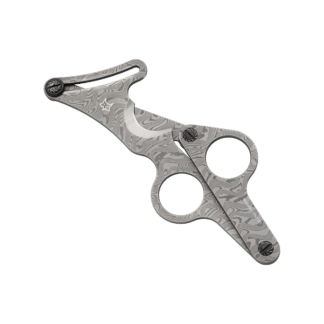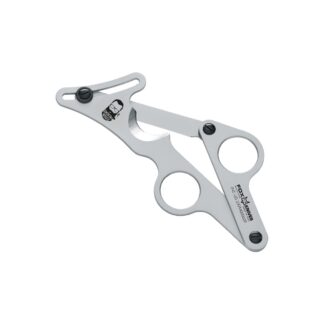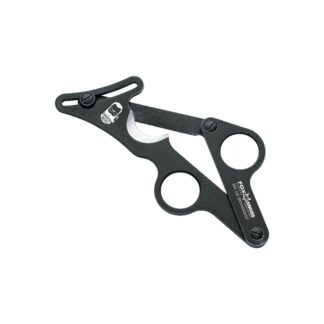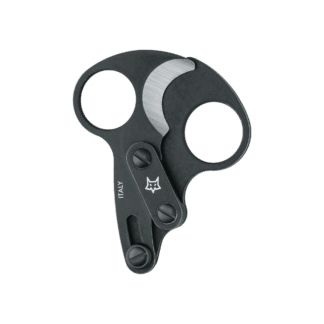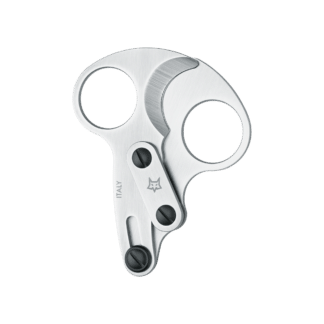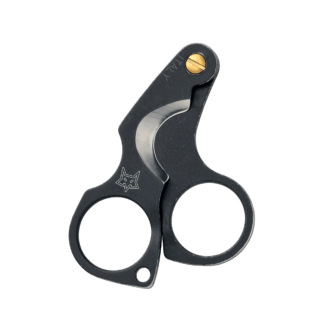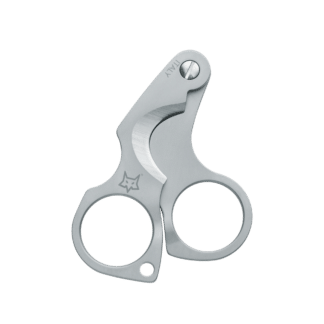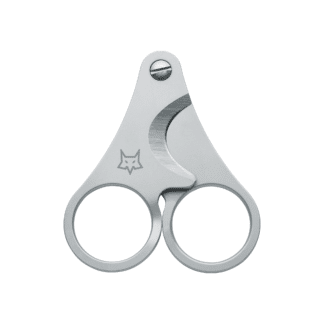Fox FAQs
Your questions answered
Do you really need a cigar cutter?
While a cigar cutter is recommended for a clean, precise cut, it's not absolutely necessary. In its absence, you can use alternatives like a sharp knife, scissors, or even a small drill for a punch cut. However, these methods require more skill and caution to avoid damaging the cigar. A proper cigar cutter is preferred for ease of use, consistency, and maintaining the integrity of the cigar.
What are the different types of cigar cutters?
There are four main types of cigar cutters: Guillotine cutters for a straight, clean cut; V-cutters that carve a V-shaped notch; punch cutters which bore a circular hole; and scissor-style cutters, offering precision and ideal for larger cigars. Each type caters to different cutting preferences and cigar sizes.
How do I choose the right cigar cutter for my cigars?
To choose the right cigar cutter, consider the size and shape of your cigars, your preferred cut style, and ease of use. Guillotine cutters are versatile for most sizes, V-cutters are great for a concentrated draw, and punch cutters suit those who prefer a smaller opening. Scissor-style cutters are ideal for enthusiasts seeking precision, especially with larger or more delicate cigars. Your choice should align with both your cigar types and personal cutting preferences.
How do I properly use a cigar cutter?
To properly use a cigar cutter, first identify the cigar's head (the part you'll smoke from). For a straight cut, place the head in the guillotine or scissor cutter's opening, aligning it where you want to cut, usually around 1/16 to 1/8 inch from the end. Squeeze the cutter quickly and firmly for a clean cut. For V-cutters and punches, apply them directly to the cigar's cap, applying even pressure.
How do I maintain my cigar cutter?
To maintain your cigar cutter, regularly clean the blades with a soft cloth to remove tobacco residue. Apply a small amount of light oil on the hinges to ensure smooth operation. Store it in a dry place to prevent rusting. Regular maintenance ensures a clean cut and prolongs the cutter's life.
Are there any safety considerations when using cigar cutters?
Yes, safety is important when using cigar cutters. Always keep your fingers away from the blades when cutting and use the cutter's designated grip areas. After use, lock or close the cutter to prevent accidental injury, especially around children. Store it in a safe place to avoid unintended use.
What type of cutter is best for cigars?
The best type of cutter for cigars depends on personal preference and the cigar's size. Guillotine cutters are versatile and widely preferred for their clean, straight cut. V-cutters offer a deeper, concentrated draw, ideal for thicker cigars. Punch cutters are convenient for a smaller, consistent hole, while scissor cutters provide precision, especially for larger, more delicate cigars.
What is a perfect cut, and how do I achieve it?
A perfect cut in cigar smoking refers to cleanly slicing off the cap of the cigar without damaging the structure, ensuring a smooth draw and preserving the cigar's integrity. To achieve this, use a sharp, high-quality cutter. Position the cutter just above the cigar's shoulder (where the curved end starts to straighten out) and quickly, firmly make a single, straight cut, removing only about a sixteenth of an inch to an eighth of an inch off the end. This precision helps maintain the cigar's wrapper and ensures an enjoyable smoking experience.
What are some common mistakes to avoid when using a cigar cutter?
Common mistakes to avoid when using a cigar cutter include: cutting too far from the cigar's cap, which can cause unraveling; using dull blades, leading to a jagged cut; applying uneven pressure, resulting in an asymmetric cut; and rushing the cut, which might damage the cigar. Ensuring a clean, precise cut enhances the smoking experience.
What is the significance of the cut in the overall cigar-smoking experience?
The cut's significance in cigar smoking lies in its impact on the draw and flavor. A proper cut allows for a smooth, even draw, ensuring consistent flavor and burn. The type of cut can also affect the intensity and concentration of smoke. An incorrect cut may cause unraveling or an uneven burn, detracting from the experience. Therefore, the right cut is crucial for an enjoyable cigar-smoking session.
Are there any specific techniques for cutting cigars with pointed or torpedo-shaped caps?
For cutting cigars with pointed or torpedo-shaped caps, it's important to adjust the technique slightly. Start by making a shallow initial cut at the narrow end of the cap, just enough to open the cigar. If the draw feels tight, you can gradually increase the size of the cut. Scissor or V-cutters are ideal for these shapes, as they allow for precise control over the cut's depth and size, ensuring a smooth draw without compromising the cigar's structure.
Is it necessary to remove the cigar band before cutting?
It is not necessary to remove the cigar band before cutting. Most smokers prefer to leave the band on until after lighting and smoking the cigar for a while, as the heat helps loosen the glue, making it easier to remove without damaging the cigar's wrapper. The band also serves as a handy guide for where to cut, especially for beginners.
What should I do if my cigar cutter becomes dull or loses its sharpness?
If your cigar cutter becomes dull, you have a few options. You can sharpen the blades using a fine sharpening stone or a honing rod, especially if it's a high-quality cutter. Some manufacturers offer sharpening services or replacement blades. Alternatively, if the cutter is inexpensive or disposable, it might be more cost-effective to replace it. Regular maintenance, like cleaning and light oiling, can help prevent the blades from dulling quickly.
Are there any cigar cutters that are particularly well-suited for beginners?
For beginners, scissor-style cigar cutters are a good choice as they offer greater control and precision. They work well with a variety of cigar sizes and shapes, including larger and more delicate cigars. The key is to use a gentle, steady hand to ensure a clean cut without crushing the cigar. Scissor cutters also allow for gradual adjustments, making them forgiving for those still learning the ideal cut depth. Their design mimics regular scissors, making them intuitive to use for novices in cigar smoking.
Can I use a cigar cutter for other purposes, or is it solely for cigars?
A cigar cutter is designed specifically for cutting cigars and should ideally be used only for that purpose. Using it for other materials can dull the blades, damage its precision, and affect its performance on cigars. For optimal use and longevity of your cigar cutter, it's best to reserve it solely for cutting cigars.
How does the size of the cutter blade affect the cigar cut?
The size of the cutter blade in a cigar cutter can influence the cigar cut in several ways. Larger straight blades in cigar cutters are versatile and can accommodate a wide range of cigar sizes, providing a straight and even cut. V-cutters, with narrower blades, create a wedge-shaped notch in the cap, affecting how much of the cap is removed and potentially enhancing flavor with a deeper V-cut. Punch cutters, featuring a small circular blade, remove a portion of the cap, with the hole's diameter determined by the punch size, affecting draw tightness. Scissor-style cigar cutters come in various blade sizes and offer versatility in achieving either a straight or V-cut, allowing for a customized experience based on personal preference and cigar size.
Do cigar cutters come with warranties?
Cigar cutters may or may not come with warranties, as it depends on the manufacturer and the specific product. Some high-quality cigar cutters from reputable brands may come with limited warranties that cover defects in materials or workmanship for a certain period. It's advisable to check the product description or contact the manufacturer or retailer to inquire about warranty coverage for a particular cigar cutter. Additionally, some retailers offer extended warranties or return policies, so it's worth considering where you purchase your cigar cutter and what guarantees or protections they provide.
Can I travel with a cigar cutter in my carry-on luggage?
Yes, you can typically travel with a cigar cutter in your carry-on luggage when flying. Most cigar cutters are allowed in carry-on bags by airport security. However, it's important to check the specific regulations of the airline and the Transportation Security Administration (TSA) to ensure compliance with any rules they may have regarding sharp objects or cutting tools. To avoid any potential issues, you can pack your cigar cutter in a way that keeps it secure and prevents it from being easily accessible during the flight.
What is the significance of the cap on a cigar, and why is it important to cut it correctly?
The cap on a cigar is multi-functional, serving to protect the delicate wrapper leaf, enhance the cigar's appearance, and facilitate its functionality. Cutting the cap correctly before smoking is of paramount importance. An accurate cut ensures a smooth and even draw, contributing to a satisfying smoking experience. An improper cut can lead to issues such as the unraveling of the wrapper leaf, a tight draw, and a bitter taste in the smoke.
How do you sharpen a dull cigar cutter?
Sharpening a dull cigar cutter depends on its type. For straight cutters and punch cutters with straight blades or circular punches, you can use a specialized cigar cutter sharpening tool or a sharpening stone. Follow the manufacturer's instructions carefully to avoid accidents. V-cutters with unique V-shaped blades may require professional sharpening, so contacting the manufacturer or a professional knife sharpener is advisable. Scissor-style cigar cutters can often be sharpened like regular scissors using a sharpening stone or rod designed for scissors. Precision and care are crucial when sharpening a cigar cutter to maintain its effectiveness and prevent damage. If unsure, seek professional assistance or guidance from the manufacturer.
Can I store cigar cutter in humidor?
It is generally not recommended to store a cigar cutter in a humidor. Humidors are designed specifically for storing cigars and maintaining their humidity levels. Storing a cigar cutter in a humidor can expose it to high humidity, which may lead to rust or corrosion of the cutter's blade. It's best to keep your cigar cutter in a dry and safe place outside of the humidor to ensure its proper function and longevity.
How do you lubricate a cigar cutter?
Lubricating a cigar cutter can help maintain its functionality. To do this, you can apply a small amount of food-grade mineral oil or a dedicated cigar cutter lubricant to the hinge or pivot point of the cutter. Be cautious not to over-apply, as excess lubricant can transfer to the cigar and affect its taste. After applying the lubricant, open and close the cutter a few times to ensure even distribution. Regular lubrication, typically done every few months or as needed, can keep the cutter operating smoothly. Remember to wipe off any excess lubricant to prevent it from coming into contact with your cigars.
What oil do you use for cigar cutters?
For lubricating cigar cutters, it's recommended to use food-grade mineral oil or a dedicated cigar cutter lubricant. Food-grade mineral oil is safe for use with items that may come into contact with consumables, such as cigar cutters. You can find cigar cutter lubricants specifically designed for this purpose, which may offer additional benefits like corrosion resistance. When applying any lubricant, use a minimal amount to prevent it from transferring to your cigars and affecting their taste.
How often should I replace the blades on my cigar cutter for optimal performance?
The frequency of blade replacement for optimal performance in your cigar cutter varies depending on usage and the type of cutter. Straight and punch cutters generally require blade replacement every year or two, or when you notice a decline in cutting quality. V-cutters may need replacement every 6 months to a year, especially if cuts become uneven or jagged. Scissor-style cutters with stainless steel blades can last a long time but should be replaced if cutting performance diminishes. Regular maintenance, including cleaning and lubrication, can prolong blade life.
Can I use a cigar cutter for other purposes, like cutting paper or plastic?
It's not advisable to use a cigar cutter for purposes other than cutting cigars. Cigar cutters are designed specifically for cutting the delicate wrapper leaves of cigars, and using them on paper or plastic can dull or damage the blades. Additionally, cross-contamination with materials like ink or chemicals from paper or plastic can affect the flavor and safety of your cigars. It's best to use dedicated tools for cutting paper, plastic, or other materials and reserve your cigar cutter solely for its intended purpose to maintain its functionality and hygiene.
Are there cigar cutters that are known for their collectible or artistic value?
Yes, there are cigar cutters known for their collectible or artistic value. Some cigar cutters are crafted with exquisite materials such as precious metals, fine woods, or gemstones, making them sought-after collector's items. Additionally, artisanal or custom-made cigar cutters often feature unique and intricate designs, which can be highly valued by collectors. These collectible cigar cutters are appreciated not only for their functionality but also as works of art that reflect the craftsmanship and creativity of their makers. Collectors often seek out vintage or limited-edition cigar cutters from renowned brands or artisans to add to their collections.
